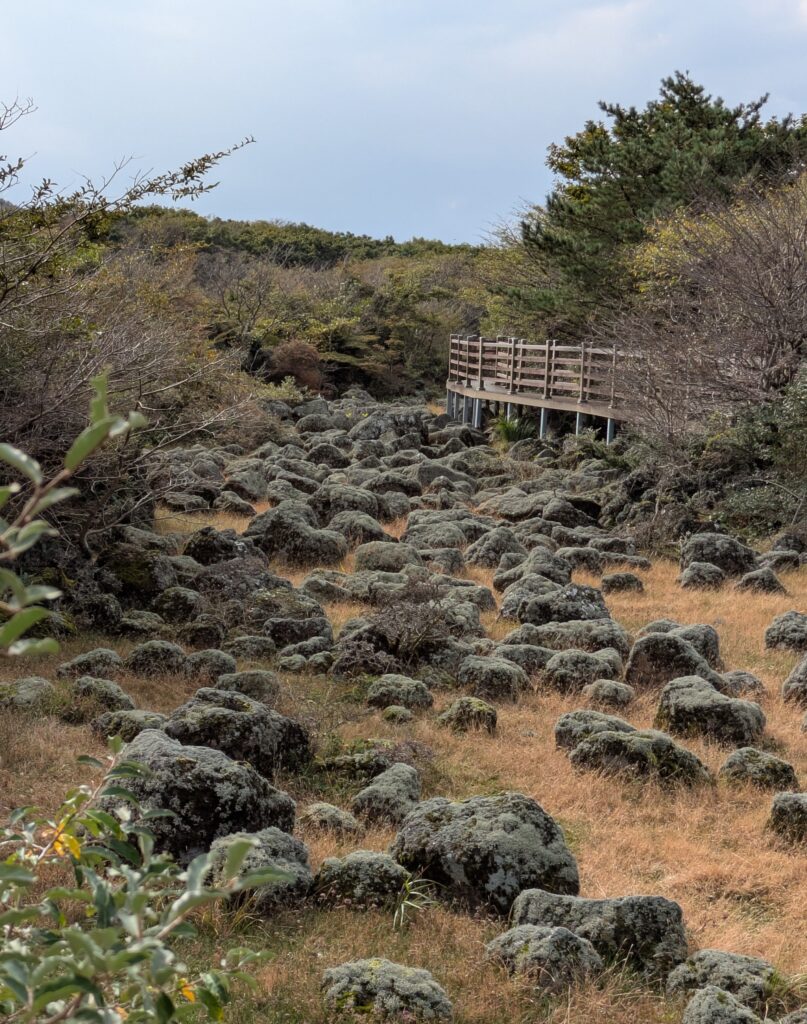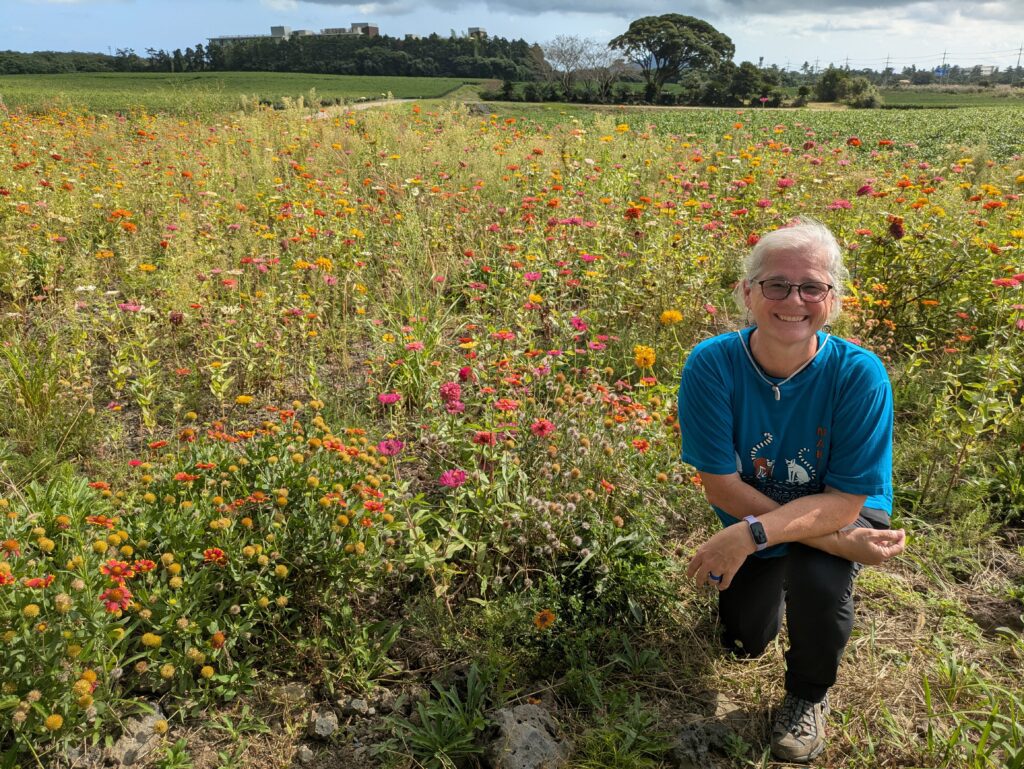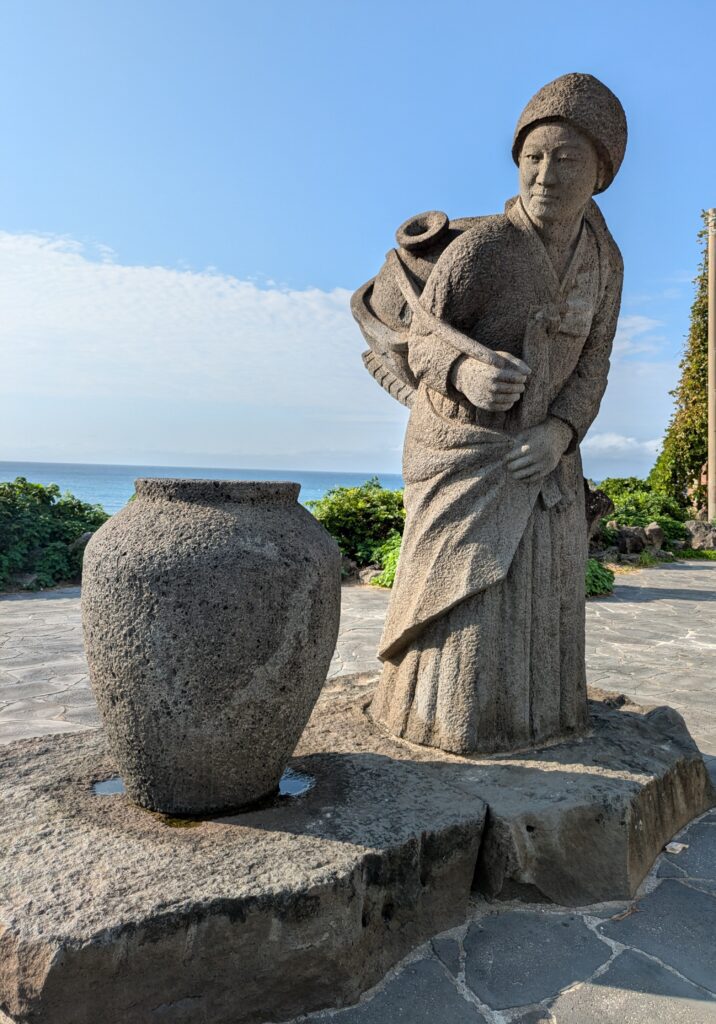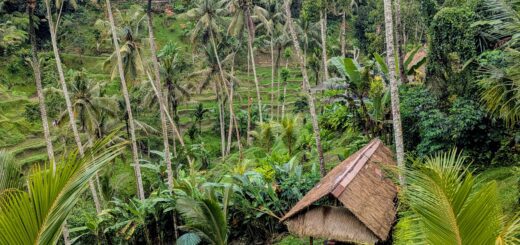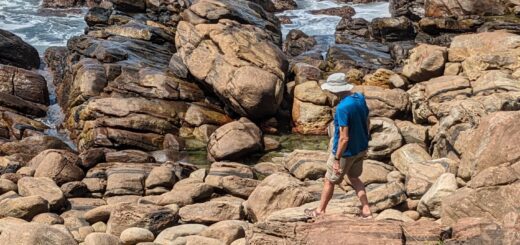Jeju, Korea #11
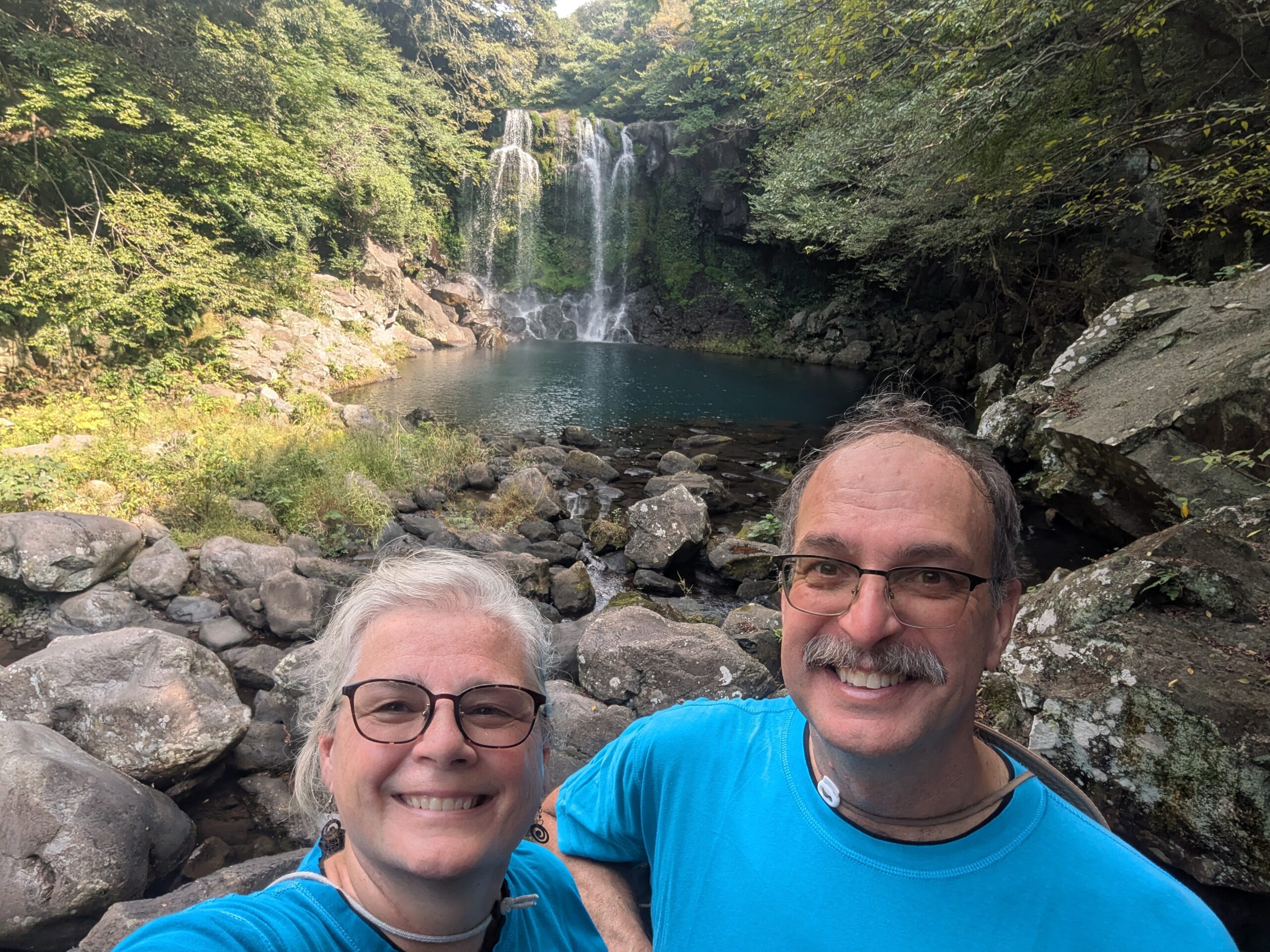
October 15,
We got up & about by 0630, had our Javas, and breakfast of Muesli, chocolate milk, and yogurt. We left our place walking to a predetermined pickup point. It was set for catching our booked Jeju tour, run by Love Korea. Jeff had booked it because it was supposed to rain today.
Promptly at 0900, our tour VIP limousine bus arrived. We loaded, joining 16 others, but we completed the group. Chloe is our tour guide. We set off and she “mic’d” up. She talked, giving facts about Jeju Island. The Korean name means province across the sea. Jeju is known for three things: wind- and lots of it, used for major power source, with lots of windmills; stone- the island is made of volcanic, basalt; and women- specifically the Haenyeo. Jeju’s population is 680,000, with 70% of the people living in the north – Jeju City, and the other 30% in the south- tied in with Seogwipo City.
By now we arrived at our first stop, “1,100 highlands.” It is named this because we were 1,100 m above sea level (highest road in Korea). Chloe had told us the highest point in South Korea is on Jeju. It’s 1,950m or 6388ft up, at Halla Mountain. This is also Hallasan National Park. We got out and had 30 minutes to explore. On one side of the parking was a wetland walk area, along an elevated walkway in a circle. It was beautiful. There were some birds flying around; and very interesting stones covered in lichen and moss. We heard frogs, but never saw them. There were many flying insects as well- Wide-bellied Skimmers – a dragonfly – that kept buzzing me. As we left we watched some Indian Spot-billed Ducks. Our only complaint was it was not enough time – the herding mentality of tours. Everyone in our group – except a French lady who befriended us – rushed through the walkway to go to the other side of the parking lot. It was a convenience and souvenir store. Chloe hyped it saying it was the highest in elevation in South Korea and a great place for pictures to say you had been there. We went briefly to the shop to get a drink, since it wasn’t a priority!
We left at 1012, off to the Jusangjeolli Cliff area made of basalt hexagonal rock. On our way there, Chloe told us about… Three specialties of Jeju: tangerines- grown here in the winter; black pork- a thicker skinned pig that can sustain snake bites; and Hairtail fish- aka, a Cutlass Fish or a Beltfish and seafood. Then she told us of two alcoholic drinks: soju- a distilled spirit; and makgeolli- a fermented rice wine. Anyway, we arrived at the cliffs and walked to the coastal edge. There they were the hexagonal formations, like we saw in Northern Ireland. Unfortunately, we couldn’t go down to them and walk around them like at the Giant’s Causeway – pooh! Chloe did offer to take everyone’s picture. Some of the formations we noticed are four or five sided, but most were the same six-sided ones. Jeff looked up and there are a few other places in the world that have these- fascinating! We left at 1045, on to our next destination.
We arrived at Cheonjeyeon Falls. Guarding the entryway were ‘Stone Grandfathers,’ as Chloe called them, or Dol Hareubang. They come in pairs, and we have seen them all over Korea. The only difference between the pair, is hand positioning. One was for wisdom or power and the other one for security, a guardian, or a general. They protect the entrance. Then we entered and crossed the seven fairies bridge, which went over the river formed from the waterfalls. Anyway, Chloe said the bridge symbolized – for Koreans – going up to heaven. My thinking, then we come back down to earth?? Anyway, we come to and see the 2nd waterfall 1st. It was a classic branched fall. Nice. Next is the 1st waterfall. It has no water except after a typhoon. So none today, but had a lovely emerald pool. When we finished we shared a Hallabong drink, then returned to the bus. Everyone had returned to the bus by 1204, so we left before designated time of 1210.
Next we went to the restaurant, called Black Pig “Buttocks Sashimi” Restaurant. We wanted to share a buckwheat noodle dish. Wow, the waitress would not take our order unless we ordered two dishes. Chloe had to intervene. The noodles were good and cold, as they are supposed to be. We also had a peanut makgeolli. We liked this flavoring better. Our lunch cost 18,000 KRW, or $12.70.
We were all back on the bus by 1320. Just as we started it rained! Thankfully we were on the bus. The next stop- the Osulloc Tea Museum. Upon arriving, the place is swarming with many other bus tours. We were able to sample some peanut tea, but just missed out on their Tangerine tea. I guess that was a good thing 🤔 as their teas were way overpriced and if I would have tried and liked it… ☹️! We stepped out of the museum and walked around the tea plantation circling the museum and away from the hysterical masses.
The bus left at 1450 and went to the last stop, Aewol Cafe Street. It had stopped raining and the sun was shining. We were given lots of time here… to shop, of course. It is a “trendy” spot, but there is another option. We went to a walkway or “boardwalk” along the water’s edge, as we were back on the northern coast. Nice shore with some real, small, sand beaches. When time was up we lined up with everyone else to be picked up. Now we drove back to where we were picked up and off loaded the bus – tour over! It was by 1700.
We walked to a restaurant we wanted to eat at called The Noodle Tree. We had two soups: a Vietnamese Pho, and Gogo Jeuk-myeon, which is noodle bowl topped with spicy stir-fried pork. We shared a Soju and Jeff had a beer. It cost us 29,200 KRW, or $20.60. We went back to our place, blessed with another great day!
